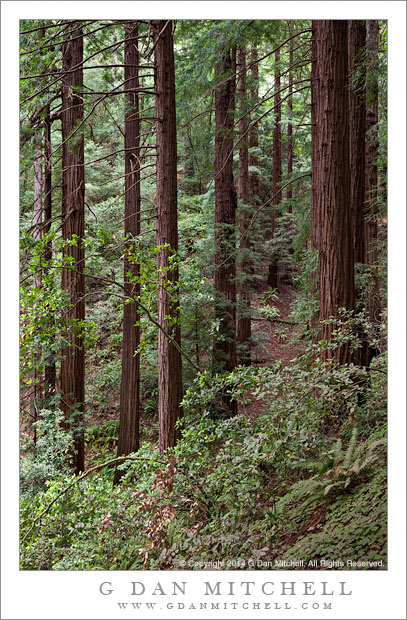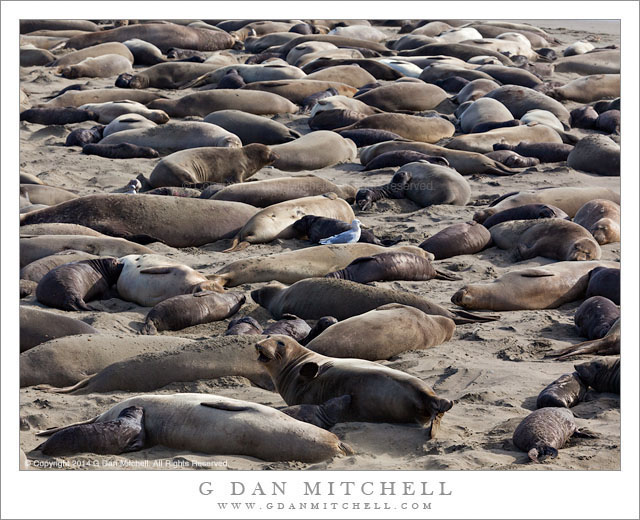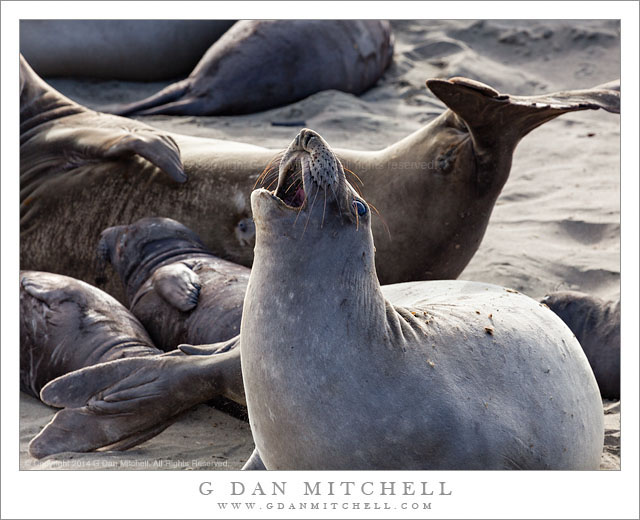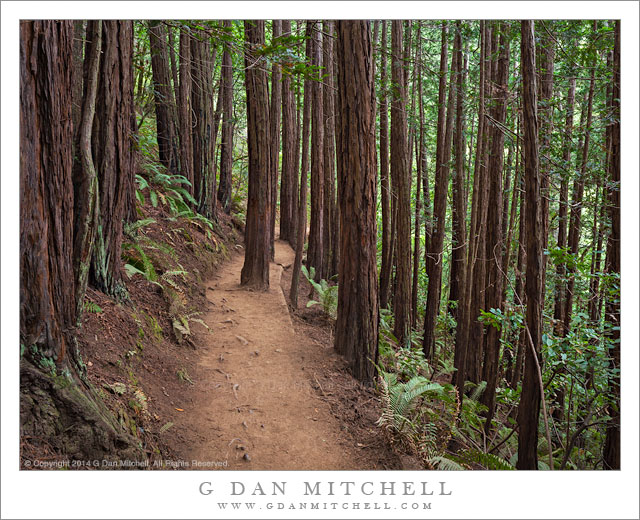
Redwood Forest. Muir Woods National Monument, California. July 11, 2014. © Copyright 2014 G Dan Mitchell – all rights reserved.
Redwood trees growing in a gully at Muir Woods National Monument
I had a couple of primary goals on this visit to Muir Woods National Monument: I thought it might be a good location to shoot on this overcast summer day since the high fog softens the light that can otherwise be quite challenging inside the redwood forest. I also wanted to play with a new ultra wide-angle zoom lens, and I figured that this would be a better place for that activity than spending time in an urban setting… even though the latter might allow for more objective lens testing.
I typically arrive at Muir Woods very early in the morning, partly for the quality of the light in the forest at that time of day and partly for the very practical reason that the hordes of tourists from San Francisco are still mostly having coffee back at their hotels! However, I did not get there quite as early this time, and as I entered the park I could tell that it would not be too long before those hordes finished their coffee and began arriving. So I took a side trail up out of the valley of Redwood Creek (the location of the popular nature hike loops) and climbed up towards higher ridges. I was not alone on this trail but there the number of other hikers was reasonable, and for reasons ranging from aesthetic to objective (e.g. – testing that lens) this turned out to be a good choice. As the trail climbed, the views opened both above and below my camera position, and it was possible to shoot straight toward the trees and show a bit more of their height. Here a group of younger redwoods grows closely together in a small valley.
 G Dan Mitchell is a California photographer and visual opportunist whose subjects include the Pacific coast, redwood forests, central California oak/grasslands, the Sierra Nevada, California deserts, urban landscapes, night photography, and more.
G Dan Mitchell is a California photographer and visual opportunist whose subjects include the Pacific coast, redwood forests, central California oak/grasslands, the Sierra Nevada, California deserts, urban landscapes, night photography, and more.
Blog | About | Flickr | Twitter | Facebook | Google+ | 500px.com | LinkedIn | Email
Text, photographs, and other media are © Copyright G Dan Mitchell (or others when indicated) and are not in the public domain and may not be used on websites, blogs, or in other media without advance permission from G Dan Mitchell.



